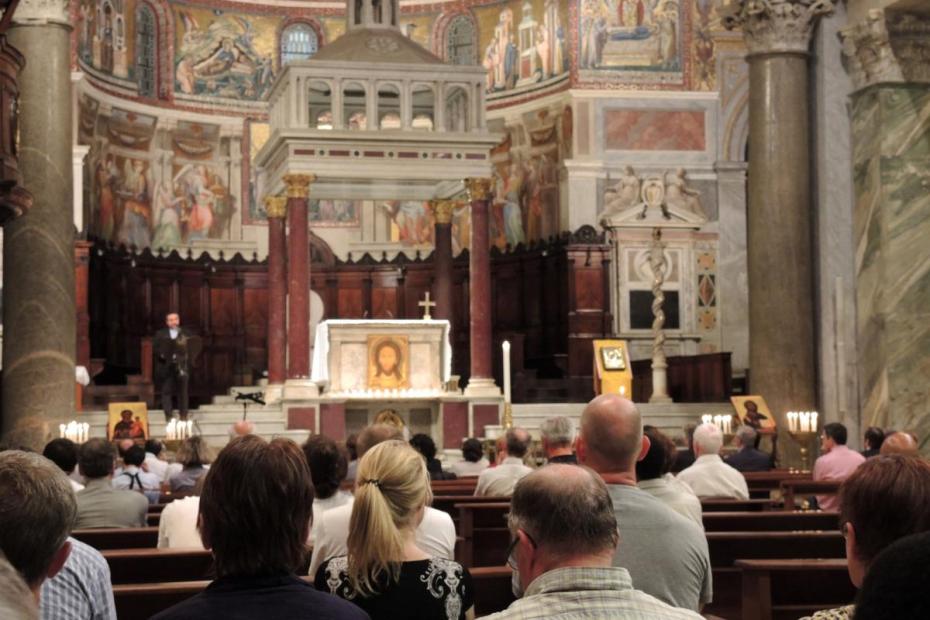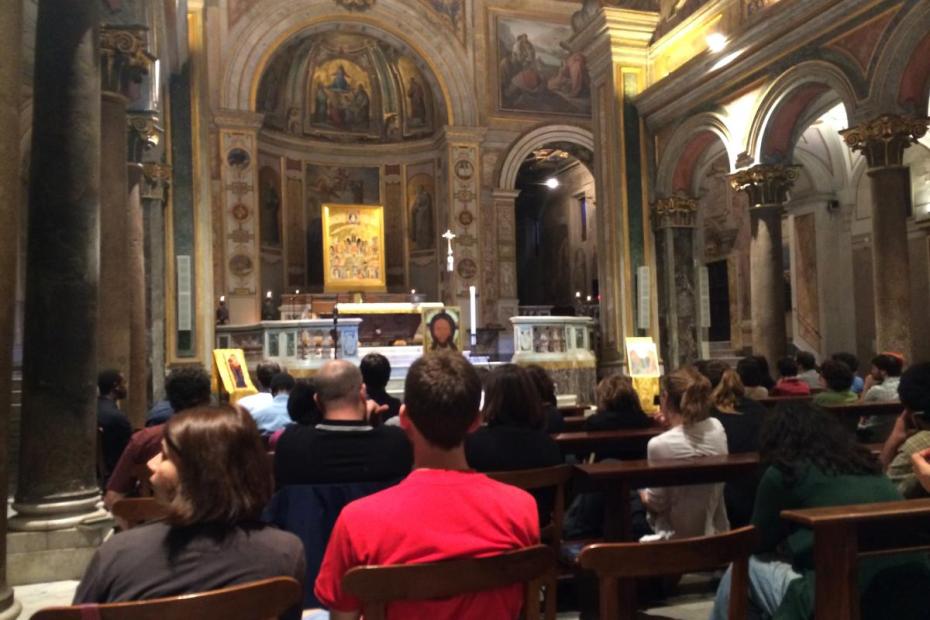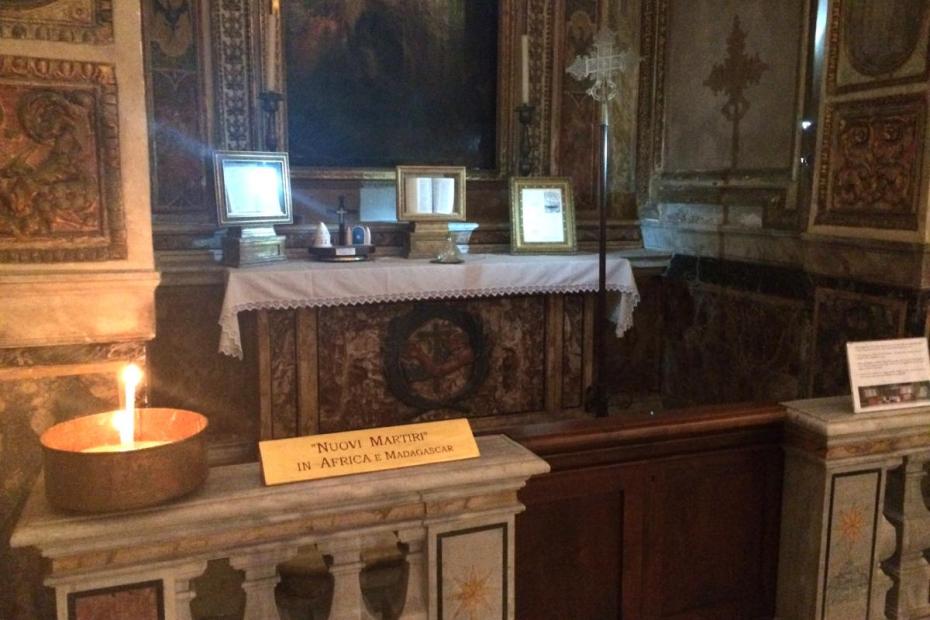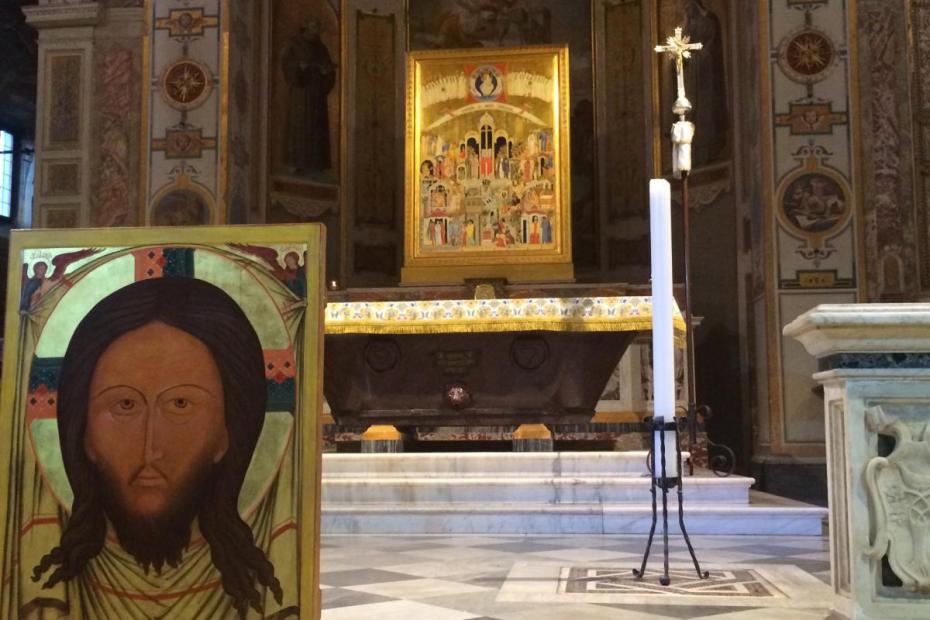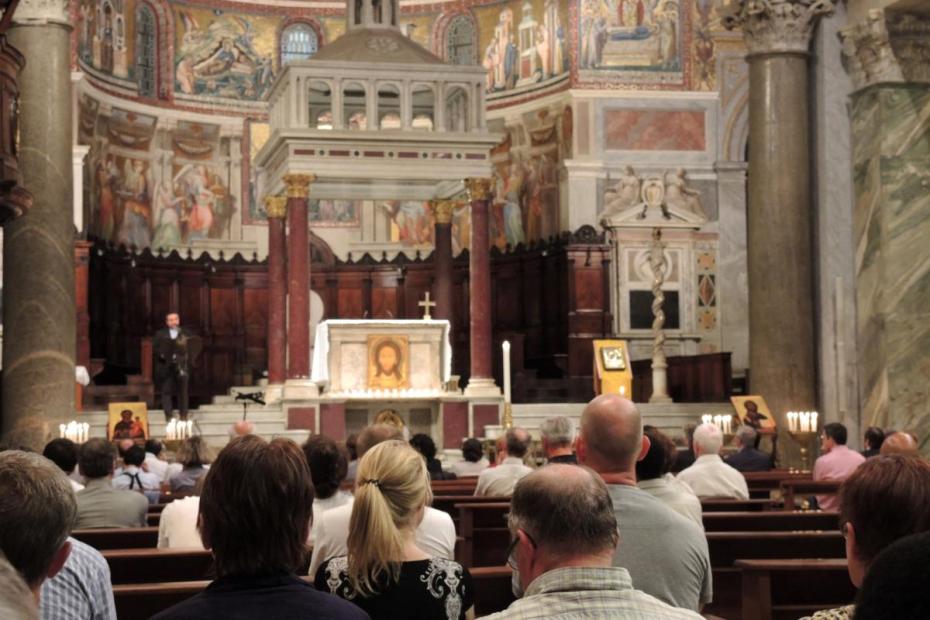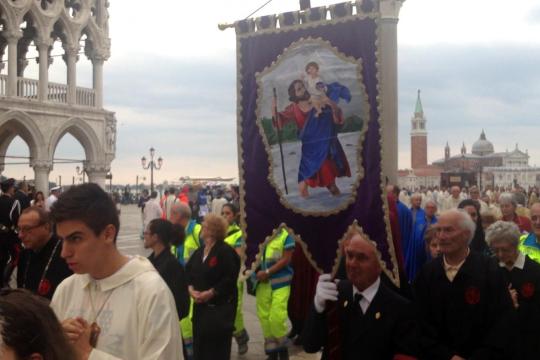Sant'Egidio is a global community of lay Catholics, numbering perhaps 70,000 people in 73 countries. On the global stage, it is probably best known for having brokered the end to Mozambique's civil war; for its success at bringing free, high quality AIDS prevention and anti-retroviral services to sub-Saharan Africa; for its annual high-level interfaith prayer meetings in Assisi; and for its advocacy against the death penalty.
At home in Rome
Highly visible as those efforts are, Sant'Egidio's roots are deep and broad in Rome, where this article focuses, in the somewhat Bohemian neighborhood of Trastevere, and in many other neighborhoods around the periphery of the city. In Rome, people know of the community, especially for its many forms of direct service, peacemaking efforts, its gift for friendship, its ecumenical focus and its evening common prayer services each night in two churches. The Roman members of Sant'Egidio organize evening prayer services, a trattoria that employs the disabled, soup kitchens, clothing shops and service guides for the homeless, ministries of presence and support to the disabled and the elderly, and work with immigrants.
Founded in 1968 by a public high school student named Andrea Riccardi during the early part of an era of intense political and social upheaval, it began as a small group of students who read the Bible together and engaged in very ordinary, small scale forms of service like tutoring poor young people in the migrant ghettos that had sprung up on the fringes of Rome. As many of the early generation recall it, their Gospel reading led them to seek alternatives both to Marxist, political ideologies that they saw leading nowhere, and to the Christian Democratic movement that unhelpfully interwove church and state.1 They prayed together regularly and demonstrated a gift for friendship that was open and seemingly contagious. Sant'Egidio continues to build up its ranks in Rome particularly through small groups of high school friends, primarily among students from middle class families. One member suggested that there are about 2,000 community members in the Roman high schools today.
In Rome, a great many Sant'Egidio members describe themselves as people who, like the great majority of Romans, grew up nominally Catholic but not very invested in their faith except as an identity and a marker of life stages like birth, marriage and death. An encounter with Sant'Egidio through Gospel reading, common prayer, friendship, and presence among the poor is generally cited as a turning point in their lives.
In Rome, the organization is notably present in the neighborhood of Trastevere, where its primary home is the small church and cloister of Sant'Egidio, which was given to it in run-down condition in 1973 when the neighborhood was in rough shape.2 The community's evening prayer quickly outgrew its setting in Sant'Egidio, so the community moved its evening prayers next door to the ancient basilica of Santa Maria in Trastevere. In 1993, Pope John Paul II gave the community a second home in the Basilica of San Bartolomeo, nearby on the Tiber Island. It has become a site for ecumenical and interfaith work, and a primary home to a younger generation of Sant'Egidio members. It is also a site, at John Paul II's request, for commemoration of Christian martyrs of the 20th and 21st centuries.3
Well beyond those high profile Roman sites, the community is quite active in the far-flung neighborhoods outside the ancient walls of the city. The work of the community, and much of its prayer life, transcends the bounds of parish life, sometimes to the consternation of pastors who want to draw them in to parish works and structures. While there are large common prayer events in Rome, most of the community's life is manifest in small groups who pray together, perform ministry at common sites and share friendship. Members tend to speak of "generations" in Sant'Egidio, and to some degree develop cohorts of friends who came together in their youth and continue to move through life together as a group committed to ministry and the Gospel.
Structure and membership
One of the hardest things to grasp about Sant'Egidio is the fact that for all it has accomplished, its structure and boundaries are significantly more fluid than most religious organizations, particularly ones that have drawn such devoted members. There are no formal rites of initiation, no vows and few real requirements except intensive voluntary commitment. Members all live in their own homes, not in Sant'Egidio houses. They do not wear any special identifying clothes, though one often sees people around Rome wearing a pin or carrying a canvas bag with a Sant'Egidio logo. The community has no dues or tithing, though members are often asked to give for particular purposes, e.g. when a poor person served by the community has specific needs. The requirements for membership essentially entail commitments to prayer and to service together. Members regularly talk about friendship as the bond that holds the community together, and appear to be unusually adept at maintaining unusually deep and significant bonds that way.
There are priests among the members, but Sant'Egidio defines itself as a lay community, and only lay members can be elected to leadership. Sant'Egidio's president and council are elected by an assembly of representatives of the many countries where Sant'Egidio communities are active. The president and council, like the members, have full-time jobs outside the community.4 The community has official status from the Holy See as a lay association of the faithful. While it cultivates friendships with popes, bishops and clergy, it stands out for how successful it has been in drawing the clergy to want to be part of its prayer and works, to participate in it as a lay movement with its own charism.
Worship
Evening prayer at Sant'Egidio is a popular event in Rome, drawing more friends than members on many nights. Given that it happens in significant churches like Santa Maria in Trastevere and San Bartolomeo, members work to establish an attitude of welcome but also respect to keep tourists from wandering around during the prayer.
The prayer is well structured, drawing on a book of sung hymns, but generally has no visible presider. The whole community, including the choir, faces an icon of the face of Jesus at the altar. The lighting of a candle and a sung invitatory opens the prayer, followed by anthems, psalms a litany of saints, all from Sant'Egidio's book of prayer and hymnal. A community member or visitor briefly leads a scripture reading and reflection from the altar. Occasionally there are major events that are structured differently, such as the visit of a Patriarch or other distinguished guest. After evening prayer, members tend to mingle and talk in small groups for a very long time, clearly enjoying each other's company. Visitors are readily welcomed and engaged as well.
Members of the first decade's membership cohort tend to attend evening prayer at Santa Maria in Trastevere, one of Rome's most ancient and important basilicas. They certainly draw in groups of younger friends and worshipers, but the next age cohort, members roughly 20-40 years old, is often to be found at a similar evening prayer at the Basilica of San Bartolomeo, home of the relics of the Apostle. Many other Sant'Egidio members in outlying communities also have their own common prayer.
'Mapping' Sant'Egidio
Sant'Egidio is a difficult organization to "map" for anyone who wants to locate it in political terms. It is certainly known for a number of "liberal" or "progressive" causes. Its theological culture is deeply ecumenical, particularly in relation to the Orthodox churches, based on an antifundamentalist grounding in the Bible and in a Vatican II centered ecclesiology.5 It has been adept at developing cooperative relations with government entities in Italy and abroad. Members know where they stand, but seem to work hard to resist political mapping.
One might say that Sant'Egidio has shifted the emphasis of relationship with the hierarchy from terms of obedience toward friendship. This is not to say that Sant'Egidio is in any way openly confrontational to the hierarchy in some of the ways liberal or progressive elites in other parts of Europe or the United States might expect. They certainly try to nudge the hierarchy forward on themes of ecumenism and poverty reduction and peace-building, and have in other ways been nudged and helped by leaders like Pope John Paul II on themes like the remembrance of 20th and 21st century martyrs for the faith.
From an everyday, "lived religion" perspective, it is apparent that the group's progressive focus steers clear from many contentious issues around sexuality, gender and bioethics to focus attention on different issues of poverty, peace building, prayer and solidarity.
In one interview for this project, a Sant'Egidio member showed patience when a visiting prelate's brief homily veered into a controversial theme, and worried that outside media might ascribe that perspective to the community, but also saw it as more important to work with that prelate on matters of common interest than to challenge the problematic assertion. As another interviewee put it, in very Roman fashion, "the Church is like your mother. You don't criticize your mother." While some critics of the community—and even some past members of Sant'Egidio—have been troubled by the community's avoidance of some ecclesially-charged social issues, others from within find hope in what they see as the "border-crossing charism" of Sant'Egidio.6
Read more
Austen Ivereigh, "Sant'Egidio: Prophets of the Poor and Peace," in Small Christian Communities today: Capturing the New Moment, eds. Joseph G. Healey and Jeanne Hinton, 170-176 (Maryknoll, NY: Orbis, 2005).
- 1See "Pax Romana" [interview with Andrea Riccardi] in U.S. Catholic, July 2010, 28-32, and Massimo Faggioli, "The New Elites of Italian Catholicism: 1968 and the New Catholic Movements," Catholic Historical Review 98, no. 1 (2012): 18-40.
- 2As founder Andrea Riccardi has described it, community members squatted there before it was given to them. "Pax Romana," 29.
- 3Andrea Riccardi, "Comunità di Sant'Egidio," October 22, 2012, http://www.sanbartolomeo.org/page.aspx?ln=it&id=14.
- 4Founder and President Andrea Riccardi is a highly regarded professor of contemporary history at one of Rome's state universities.
- 5Faggioli, "The New Elites of Italian Catholicism," 18-40.
- 6Laurie Johnston, "'To Be Holy in the World:' The Influence of Yves Congar on the Spirituality and Practice of the Community of Sant'Egidio," in Catholic Identity and the Laity (Annual of the College Theology Society) (Maryknoll: Orbis, 2009), 59-74.
